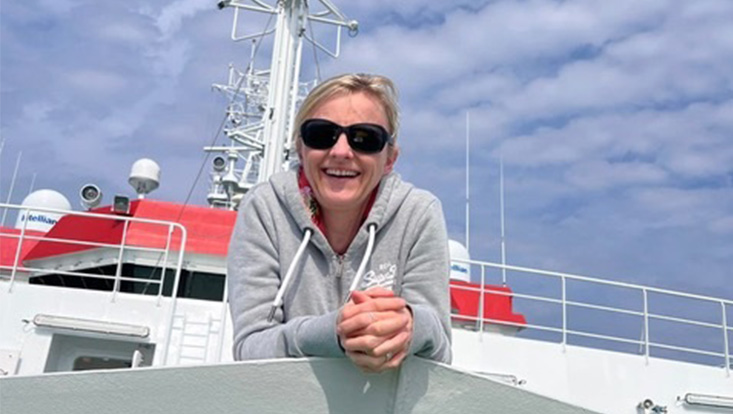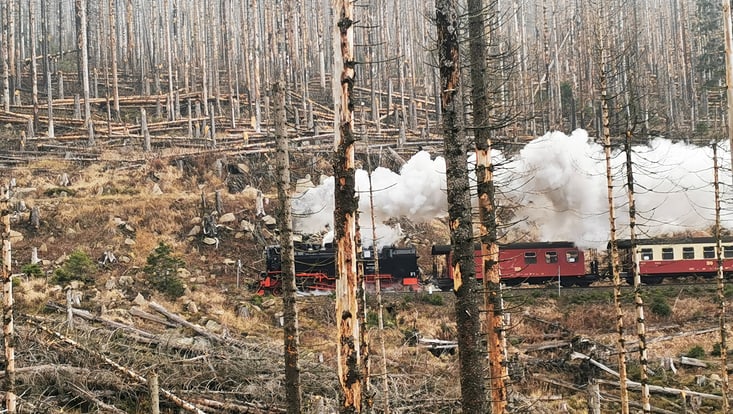Remote Sensing and Refugee Camps“Satellite Images Aren’t Objective or Neutral”
1 September 2020, by CEN webmaster
Today, satellites are providing increasingly precise data, which governments and NGOs alike are using in more and more contexts. For example, all refugee camps are now observed from space. But this raises certain humanitarian and political questions, as economic and political researcher Dr. Miguel Rodriguez Lopez from Universität Hamburg explains.
Mr. Rodriguez, in a recently released study, you and your co-authors investigated two refugee camps in Jordan and critically scrutinized the impression that the satellite images convey. What led you to this research approach?
Over the past few years, satellite data has increasingly been used for the small-scale observation of human activities, including in our own research. For instance, viewed from space, settlement patterns or the positions of specific objects can be identified. But these images only show the reality from a one-sided and therefore skewed perspective. They’re not objective or neutral, even though many people assume they are. That’s why we want to address the problem of their being used in an uncritical way.
How do the satellite images portray the camps that you visited?
The two camps for Syrian refugees in Jordan were created in 2012 and 2014. The first, Zaatari, developed with very little centralized planning, and has mushroomed since 2013. The satellite images reveal its irregular, overlapping and in some cases chaotic structures.

Plans for the second camp, Azraq, were drawn up in 2014. Viewed from space, the tent city looks comparatively neat and tidy.
These images are used by the government, NGOs and the media to observe the camps and report on them. And what we’ve found is that people’s views on the camps match the pictures presented in the satellite images: Zaatari is generally considered to be chaotic, run-down and even criminal, while Azraq is believed to be a clearly structured, easy-to-manage site.

Are their impressions accurate?
My co-author Christiane Fröhlich visited the camps, employed participant observation methods, and conducted interviews with those living in them. What came to light was a completely different picture. The people she spoke with in Zaatari are resourceful and optimistic, and take advantage of even the tiniest bit of freedom to control and improve their own situation. They expand on their temporary housing, plant makeshift gardens, and even run their own small businesses. Their resilience is just as impressive as their community spirit. In contrast, the refugees living in Azraq are subject to much closer surveillance. There, any attempts at personal initiative are quashed; as a result, it’s a horrible place to live, and most refugees try to get out as soon as they can.
And what does that tell you?
In and of themselves, satellite images are neither good nor bad. They’re important tools, allowing us to see things we can’t see from here on Earth. Classically they’re used by natural scientists, for instance to measure the ice cover in the Arctic, or to monitor the transformation of rainforests into arable land. These are large-scale processes, and satellite images are indispensable to monitoring them. Yet the resolution that they now offer also allows us to observe small-scale structures and human activities. For example, we can take a closer look at individual city districts for sociological research, or refugee camps.
In other words, we have a tool whose use is currently being transformed. In our view, to date there hasn’t been enough critical reflection on its effects. Through our work, we hope to change that.
Original article: “Digital humanitarianism and the visual politics of the refugee camp – (un)seeing control”
Authors: Dr. Delf Rothe, Institute for Peace Research and Security Policy, Universität Hamburg (IFSH); Dr. Christiane Fröhlich, German Institute for Global and Area Studies (GIGA); Dr. Juan Miguel Rodriguez Lopez, Center for Earth System Research and Sustainability (CEN), Universität Hamburg.
More Infromation
The economic and political researcher Dr. Juan Miguel Rodriguez Lopez has also focused on remote sensing in the past, having applied it to investigating urban development in Mexico City. https://www.uni-hamburg.de/newsletter/januar-2017/neue-messmethode-illegales-wachstum-von-megacities-zuverlaessig-kartieren.html
He is a member of the Cluster of Excellence for Climate, Climatic Change, and Society (CLICCS) and previously conducted research in the Middle East on how climate change and water shortages in the Jordan Valley could be used to turn enemies into partners.


